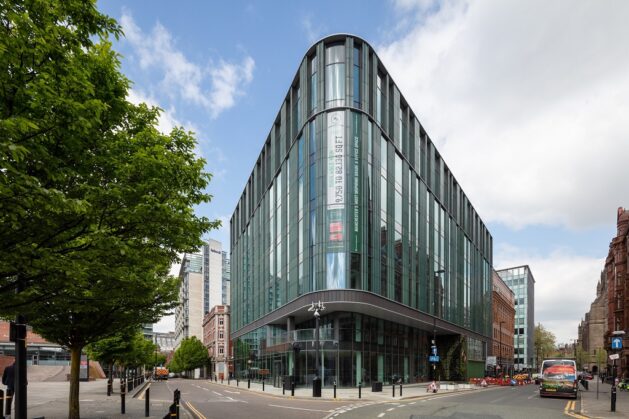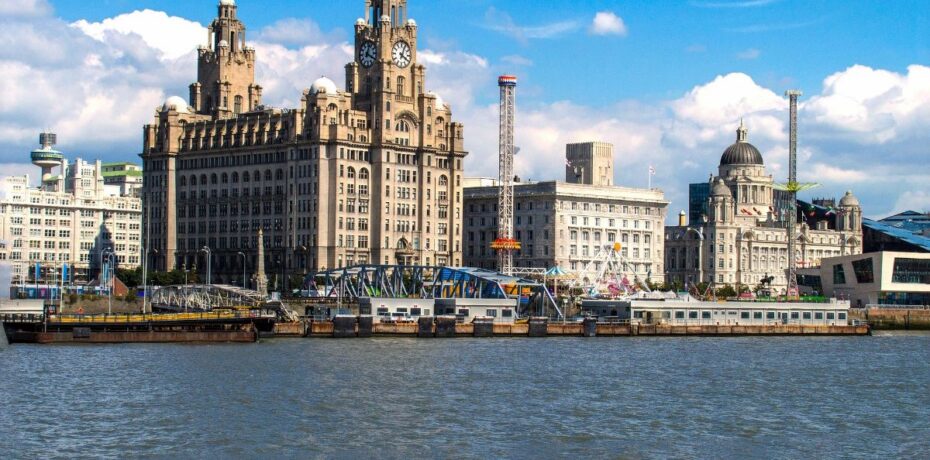The Subplot
The Subplot | Riots and regeneration, Unesco, Euro millions
Welcome to The Subplot, your regular slice of commentary on the North West business and property market from Place North West.
THIS WEEK
- Riots and regeneration: why, 40 years on, the Toxteth riots are still changing the way the North West gets rebuilt
- World Heritage: Unesco and Liverpool are talking at cross purposes about the waterfront heritage site
- Euro millions: Another £200m+ from Europe targets Manchester offices

RIOTS AND REGENERATION

Why the Toxteth riots still matter, 40 years on
The aftermath of the Toxteth riot in 1981 is still changing Liverpool and influencing the North West’s regeneration priorities. Here is why.
In the small hours of 6 July 1981, the police fired CS gas grenades to disperse crowds in Upper Parliament Street and Lodge Lane, Liverpool L8. This was the first time gas had been deployed on English streets and the turning point in a running battle in the streets of Toxteth. By the morning, 70 or more shops and other buildings had been damaged, some of them severely, and around 100 cars overturned or burned. Hundreds of protesters and police had been injured: on some estimates, thousands. In the days that followed riots also broke out in Manchester’s Moss Side, and in Brixton. The sun was hot that summer, the economy in ruins, and the mood apocalyptic. A still untested prime minister did not appear to have much grip.
Lessons learned
The lesson was obvious: something had gone wrong in England’s inner cities. The Scarman report, published in November 1981, deepened the diagnosis and cabinet minister Michael Heseltine was charged with finding solutions. The outcome was modern area-based urban regeneration and the 21st century’s emphasis on placemaking. Both can be traced directly to the riots.
Area-based regeneration
“The riots were rocket-fuel behind the growth of area regeneration,” says Liverpool University professor Michael Parkinson, a long-term Toxteth resident. “They changed everything – the city, the Government, the Labour Party, it is the prism through which a lot can be seen. We’d had urban regeneration since the 1960s, but the big ideas in area regeneration came from what Michael Heseltine learned from working in Liverpool,” says Parkinson.
Successes…
The Toxteth experience catalysed the regeneration effort, and for Liverpool as a whole the result was positive, says Parkinson. He points to the 1992 City Challenge bids, work at Speke-Garston and the controversial (but successful) Merseyside Development Corporation. It was in Toxteth that Liverpool and the UK learned what Parkinson calls “the clichés of partnership”, which now regulate the world of regeneration and placemaking.
…and failures
It worked for Liverpool, but did it work for Toxteth itself? Parkinson isn’t so sure. “There’s been a lot of property-based regeneration on the perimeter. For instance, there’s now a functional housing market. Yet in the heart of the area, Granby Triangle, we’ve seen four decades of initiatives, and it has improved but not fantastically. I don’t think we can say, 40 years on, that the heart of Toxteth is flourishing,” he says.
Left behind
The data is clear: Toxteth’s regeneration is not delivering prosperity or health for its residents. Princes Park Ward, which includes most of L8, has one of the best business profiles in the city. The ward is ranked third (out of 30 wards) for the number of businesses, and 10th (of 30) for number of employees. Yet the index of multiple deprivation puts Princes Park Ward at second most deprived on income, sixth on health, eighth overall, with life expectancy going sharply backwards over the last five years at a time when the rest of the city has improved. This suggests that while the area is economically active this is predominantly benefiting non-residents. Those who live in Toxteth are still seriously left behind.
Fancy that
Toxteth partisans are not surprised. Stephen Yip is chief executive of children’s charity KIND Liverpool, and is now working on plans for an £8m community centre redevelopment at the Welsh church in Princes Avenue. “The riots crystallised a lot of Liverpool’s problems,” says Yip. “There is still a great deal of poverty, and whilst the regeneration has obviously been more than window dressing, we haven’t finished what we started in L8. We need to look a lot deeper into disadvantage and discrimination in our city,” he adds. More emphasis on training, education and health in Liverpool, and maybe a bit less on real estate-based area regeneration, might be an answer.
The other riot
But this story isn’t all about Liverpool. The Manchester Moss Side riots of 8-11 July 1981 had a more complicated aftermath, and one more obviously focused on policing and housing than on the local economy. The Alexander Park estate was improved, and site clearance up to Princess Parkway is still continuing. But the main area regeneration output was diverted a few hundred yards north from Moss Side, to what were then the hippie badlands of Hulme.
Clearance
In Hulme, as in Toxteth, the riots provided the backdrop to regeneration, delivering lessons in what needed attention. “The riots were an expression of the isolation of a community and its disenfranchisement,” says architect Andy Avery, director of Buttress and in 1991 one of those involved in drawing up the Hulme masterplan. The Crescents and the deck-access housing of Boundary Road were cleared and through-routes like Stretford Road rediscovered.
Placemaking born here
Thanks to Hulme and its building design code, the urban ambitions of modern area regeneration were reformed. Dense development on connected streets, rather than estates like nearby Alex Park, or suburban-style development on cul-de-sacs, was Hulme City Challenge’s aim. It has been the UK regeneration default setting ever since. “We were very clear, we didn’t want to create ‘estates’,” Avery recalls. “Suburban development was not the model, and we wanted permeability. But it was also about the quality and density of development. We wanted Hulme to look different.” The idea of placemaking, now at the heart of urban regeneration, was born in Hulme.
Conclusion: The 1981 riots were a turning point. Both cities are still living with – and living out – the successes and failures,of the urban regeneration response.
DRIVING THE WEEK
Balancing act
The Unesco World Heritage Committee meets in Fuzhou, China, from 16 to 31 July to discuss, among other things, the current state of repair of its list of World Heritage Sites. Liverpool’s status has a big question mark over it, thanks to a report that you can read here.
Liverpool’s 326-acre waterfront won World Heritage Site status in 2004 (one of six areas of the city to be designated), but for more than half of the time since Unesco has regarded its heritage as in danger. This is thanks to developer Peel L&P’s Liverpool Waters scheme. Peel’s original “Shanghai”-style skyscraper proposals have dropped out of public view (and perhaps viability) but the latest proposals for an Everton FC stadium at Bramley-Moore Dock represent a live threat, Unesco thinks.
Could do better
The gist of Unesco’s complaint is that while Liverpool is thrilled about having the status, it has no adequate process to protect it. It is also missing a lot of the baseline research which would allow you to judge new proposals. “Lack of overall management of new developments…Lack of analysis and description of the townscape characteristics relevant to the Outstanding Universal Value of the property and important views related to the property and its buffer zone… Lack of established maximum heights for new developments along the waterfront and for the backdrops of the World Heritage property,” says the report.
Grandstanding
The Bramley-Moore dock proposal is the last straw. The report concludes there has been “…serious deterioration and loss of attributes that convey the [outstanding universal value] of the property to the extent that it has lost characteristics which determined its inclusion in the World Heritage List,” and proposes it be struck out.
You say potato
The dispute boils down to two groups talking at cross purposes. Unesco wants a piece of paper that shows, with appropriate rules and sanctions, how Liverpool will protect its World Heritage asset. Instead, Unesco complains that the city keeps producing pieces of paper that show how parts of the city will be redeveloped. That’s not a wrong aim: it is just not what Unesco asked to see. Unesco says the focus of the ‘2020 North Shore Vision’ produced by the city council and its partners last year “is not on protecting [the waterfront] but rather on outlining [the] integrated development approach for an area of the city that is in need of social and economic realignment…This indicates that there are no legal and instrumental means available in the governance of the property that would allow the State Party to protect the [outstanding value] of the property,” the report says.
I say tomato
From the other side, the defence points to the existing 2017-2024 management plan, and insists that the city has in any case invested heavily in protecting heritage assets since 2004. Docks have often been filled in, and for good reason. Economic outputs matter, too, and Bramley-Moore Dock has long been isolated and crying out for redevelopment. It represents about a sixth of the heritage site under discussion, and offers high returns. Meanwhile, turning down schemes like plans for a hotel at Waterloo Road, which were rejected precisely because it threatened the world heritage site, proves the city is serious. You could call this pragmatism.
Big shrug
To Unesco, a response like that simply proves their point. They watch waterfront proposals come and go, and note the pragmatic balancing act. Would they be right to suspect that the best protection for the waterfront is not council policy, but the relative lack of viable proposals that might damage it (see the now defunct Shanghai plan)? Some senior Liverpool commentators seem to acknowledge the point and, privately, so do many in the property industry. And thus we reach the impasse Liverpool has been in since 2012.
Decision time
Andy Delaney, head of the Liverpool office of regeneration consultancy Aspinall Verdi hopes a pragmatic solution can be found that keeps both sides happy. Ian Steele, principal at Avison Young, agrees. “Removal of World Heritage status would be a terrible loss to the city,” he says. Practically everyone in Liverpool politics wants a compromise, but it is not clear what they are prepared to give up to get it: certainly not the stadium.
Conclusion: Everything of value comes with a cost, a cost you only feel when it clashes with another thing you also value. At which point you have to make a decision about which you value most. Unesco has made its choice. The city council has asked Unesco for more time to consider, but with work on site at the Everton stadium beginning this month, it begins to look like Liverpool has, too.
IN CASE YOU MISSED IT…

Euro millions jackpot
A joint venture between London- and Brussels-based Trinova Real Estate and London- and Stockholm-based Europi Property Group is buying in Manchester. There are a lot more deals like this to come.
Fore Partnership acquired the site of the Windmill Green block in 2015 for £13m, and having completed a mighty £15m rebuild, put the block, now grown to 81,000 sq ft, back on the market last year with a price tag of £47m. A sale has been agreed. Powerful green credentials and a classy tenant list meant bidding would always be strong.
They love you
Investors are targeting the North West in a big way. Data from Gerald Eve shows that the North West was the most active region in Q2 2021 accounting for 26% (£143m) of overall regional office investment volumes, a performance bolstered by Ashtrom’s purchase of 8 First Street for £82m. Another £538m of regional office deals are due for completion in Q3, and you can safely assume at least a quarter are in Manchester.
Pause for thought
But while the office investment pipeline looks good, deal volumes today are not so amazing. Better than 2020, but not as good as 2019. Vendors are sitting on their hands waiting to see what comes next (and gambling on price rises), which depresses volumes. Institutions remain the most active vendor in the year-to-date accounting for 23% (£211m) of sales in H1 2021, Gerald Eve said.
And then the deluge
More stock will come onto the market as the year finishes, coinciding with a yet sharper focus on regional opportunities. The Windmill Green deal was a triumph. But it will look modest compared to what may come next.
The Subplot is brought to you in association with Cratus and Bruntwood Works.





